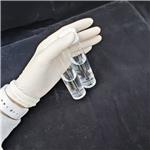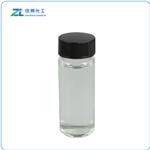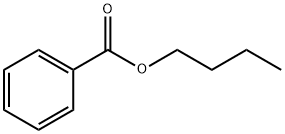Butyl Benzoate: Applications & Environmental Risk Assessments
Butyl benzoate is a clear yellowish oily liquid or colorless viscous liquid, used as a solvent, a perfume ingredient and a food preservative. It is an ester created when benzoic acid reacts with n-butanol in the presence of an acid catalyst, a process chemists first documented in the late 1800s. Although trace amounts can be found in certain fruits and spices, the material used by perfumers today is almost always manufactured synthetically, giving suppliers tight control over purity and aroma consistency.

Update to RIFM fragrance ingredient safety assessment, butyl benzoate
Butyl benzoate was evaluated for genotoxicity, repeated dose toxicity, reproductive toxicity, local respiratory toxicity, photoirritation/photoallergenicity, skin sensitization, and environmental safety. Data show that it is not genotoxic. Data on read-across analog ethyl benzoate provide a calculated Margin of Exposure (MOE) > 100 for the repeated dose toxicity and reproductive toxicity endpoints. Data show that there are no safety concerns for butyl benzoate for skin sensitization under the current declared levels of use. The photoirritation/photoallergenicity endpoints were evaluated based on ultraviolet/visible (UV/Vis) spectra; butyl benzoate is not expected to be photoirritating/photoallergenic. The local respiratory toxicity endpoint was evaluated using the Threshold of Toxicological Concern (TTC) for a Cramer Class I material, and the exposure to butyl benzoate is below the TTC (1.4 mg/day). The environmental endpoints were evaluated; it was found not to be Persistent, Bioaccumulative, and Toxic (PBT) as per the International Fragrance Association (IFRA) Environmental Standards, and its risk quotients, based on its current volume of use (VoU) in Europe and North America (i.e., Predicted Environmental Concentration/Predicted No Effect Concentration [PEC/PNEC]), are <1.[1]
Butyl benzoate was assessed in the BlueScreen assay and found positive for cytotoxicity (positive: <80% relative cell density) without metabolic activation, negative for cytotoxicity with metabolic activation, and negative for genotoxicity with and without metabolic activation. BlueScreen is a human cell-based assay for measuring the genotoxicity and cytotoxicity of chemical compounds and mixtures. Additional assays were considered to fully assess the potential mutagenic or clastogenic effects of the target material. The mutagenic activity of butyl benzoate has been evaluated in a bacterial reverse mutation assay conducted in compliance with GLP regulations and in accordance with OECD TG 471 using the standard plate incorporation method. Salmonella typhimurium strains TA98, TA100, TA1535, TA1537, and Escherichia coli strain WP2uvrA were treated with butyl benzoate in dimethyl sulfoxide at concentrations up to 5000 μg/plate. No increases in the mean number of revertant colonies were observed at any tested concentration in the presence or absence of S9. Under the conditions of the study, butyl benzoate was not mutagenic in the Ames test.
A screening-level risk assessment of butyl benzoate was performed following the RIFM Environmental Framework, which provides 3 tiered levels of screening for aquatic risk. In Tier 1, only the material's regional VoU, its log KOW, and its molecular weight are needed to estimate a conservative risk quotient (RQ), expressed as the ratio of Predicted Environmental Concentration/Predicted No Effect Concentration (PEC/PNEC). A general QSAR with a high UF applied is used to predict fish toxicity, as discussed in Salvito et al. (2002). In Tier 2, the RQ is refined by applying a lower UF to the PNEC using the ECOSAR model, which provides chemical class-specific ecotoxicity estimates. Finally, if necessary, Tier 3 is conducted using measured biodegradation and ecotoxicity data to refine the RQ, thus allowing for lower PNEC UFs. The data for calculating the PEC and PNEC for this safety assessment are provided in the table below. For the PEC, the range from the most recent IFRA VoU Survey is reviewed. The PEC is then calculated using the actual regional tonnage, not the extremes of the range. Following the RIFM Environmental Framework, butyl benzoate was identified as a fragrance material with no potential to present a possible risk to the aquatic environment (i.e., its screening-level PEC/PNEC <1).
References
[1]Api, A. M., Bartlett, A., Belsito, D., Botelho, D., Bruze, M., Bryant‐Freidrich, A., Burton Jr, G. A., Cancellieri, M. A., Chon, H., dagli, M. L., Dekant, W., Deodhar, C., Farrell, K., Fryer, A. D., Jones, L., Joshi, K., Lapczynski, A., Lavelle, M., Lee, I., Moustakas, H.,... Tokura, Y. (2024). Update to RIFM fragrance ingredient safety assessment, butyl benzoate, CAS Registry Number 136-60-7. Food and Chemical Toxicology, 183(Supplement 1), 114500.
You may like
Lastest Price from Butyl benzoate manufacturers

US $1.00/KG2025-04-21
- CAS:
- 136-60-7
- Min. Order:
- 1KG
- Purity:
- 99%
- Supply Ability:
- 10 mt

US $70.00/kg2025-04-15
- CAS:
- 136-60-7
- Min. Order:
- 1kg
- Purity:
- 99
- Supply Ability:
- 5000


